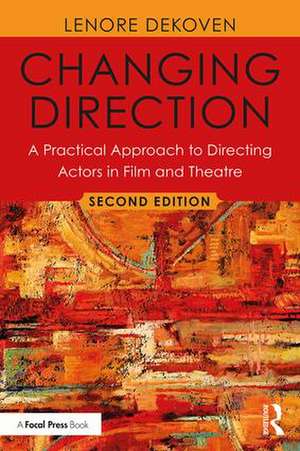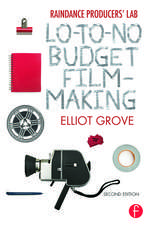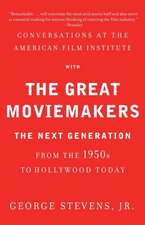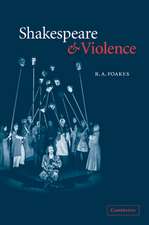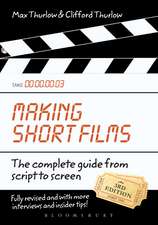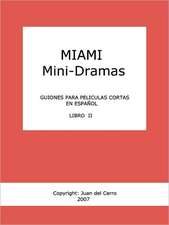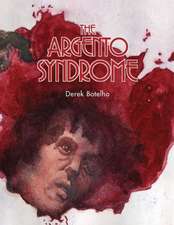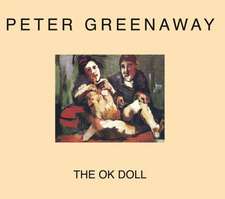Changing Direction: A Practical Approach to Directing Actors in Film and Theatre: Foreword by Ang Lee
Autor Lenore DeKovenen Limba Engleză Paperback – 7 sep 2018
Distilling difficult concepts to their simplest form, DeKoven explains how to accurately capture and portray human behavior on stage and screen, offering creative solutions to issues she has encountered or anticipated after decades of experience. Excerpts from interviews with acclaimed actors offer insight into their work with directors, what inspires them, and what they really want from the director.
This second edition incorporates the film Moonlight (2016, Barry Jenkins) for analysis of the directing concepts discussed.
| Toate formatele și edițiile | Preț | Express |
|---|---|---|
| Paperback (1) | 290.36 lei 43-57 zile | |
| Taylor & Francis – 7 sep 2018 | 290.36 lei 43-57 zile | |
| Hardback (1) | 1000.27 lei 43-57 zile | |
| Taylor & Francis – 6 sep 2018 | 1000.27 lei 43-57 zile |
Preț: 290.36 lei
Nou
Puncte Express: 436
Preț estimativ în valută:
55.56€ • 58.16$ • 45.97£
55.56€ • 58.16$ • 45.97£
Carte tipărită la comandă
Livrare economică 07-21 aprilie
Preluare comenzi: 021 569.72.76
Specificații
ISBN-13: 9781138490826
ISBN-10: 1138490822
Pagini: 212
Ilustrații: 1 Halftones, black and white; 1 Illustrations, black and white
Dimensiuni: 152 x 229 x 17 mm
Greutate: 0.6 kg
Ediția:2 ed
Editura: Taylor & Francis
Colecția Routledge
Locul publicării:Oxford, United Kingdom
ISBN-10: 1138490822
Pagini: 212
Ilustrații: 1 Halftones, black and white; 1 Illustrations, black and white
Dimensiuni: 152 x 229 x 17 mm
Greutate: 0.6 kg
Ediția:2 ed
Editura: Taylor & Francis
Colecția Routledge
Locul publicării:Oxford, United Kingdom
Public țintă
Postgraduate, Professional, and UndergraduateCuprins
1. Introduction
2. The Actor and Training
3. The Actor's Vocabulary
4. The Text and the Throughline
5. Anaylsis of Script
6. The Character Outline
7. The Casting Process
8. The Rehearsal Process
9. The Actor and the Camera
10. Film and Theatre: Differences and Similarities
11. What do the Actors Say?
12. Tips to the Director
Appendix: Additional Exercises for Workshop or Class
Appendix: Suggested Reading and Viewing
2. The Actor and Training
3. The Actor's Vocabulary
4. The Text and the Throughline
5. Anaylsis of Script
6. The Character Outline
7. The Casting Process
8. The Rehearsal Process
9. The Actor and the Camera
10. Film and Theatre: Differences and Similarities
11. What do the Actors Say?
12. Tips to the Director
Appendix: Additional Exercises for Workshop or Class
Appendix: Suggested Reading and Viewing
Notă biografică
Lenore DeKoven has had a distinguished and varied career in film, theatre, and television on both the east and west coasts. From 1988 to 2008, she taught in the Graduate Film Division of Columbia University’s School of the Arts, and has also taught at UCLA and New York University. She is a member of the Directors Guild of America, a former Vice President of the League of Professional Theatre Women, was one of the Founders of NY Women in Film and TV, and has directed and produced plays and television in New York and LA. In 1981, DeKoven created Our Workshop East, a development gym for actors, writers, and directors.
Recenzii
"The updated edition of Changing Direction is an even more lucid, useful guide for directors, performers, and spectators drawn to the craft of acting. Lenore DeKoven has distilled decades of rich experience—as both a creator and a teacher—into an accessible book that illuminates text, subtext, collaboration, and the recreation of human behavior."
—Annette Insdorf, Professor of Film; Author of Cinematic Overtures: How to Read Opening Scenes
"The essence of Lenore's distinctive methods, developed over many years, can be found in the pages of this excellent, clearly written book."
—Ang Lee, Director, Crouching Tiger, Hidden Dragon (2000), Brokeback Mountain (2005), Life of Pi (2012)
"Lenore DeKoven says in her introduction to her book, Changing Direction, that ‘everyone wants to be in show business.’ Well I am, but I've never wanted to direct. After reading Lenore's book, I may reconsider my career choice."
—Edward Asner, Actor/Producer
"I was one of the many people who, over the years, asked Lenore to write her book, and finally she has. It's a thrill to read, as well as a reminder of her great gift—her deep understanding of drama, directing, actors, everyday life, and most importantly her wealth of experience and huge heart. I will draw from this every time I work."
—Kimberly Peirce, Writer/Director of Boys Don't Cry (1999), Stop-Loss (2008); Former student of Lenore DeKoven
"Lenore DeKoven has written a great book for the director searching for practical advice on the techniques of directing actors. Her work as a teacher has already affected a generation of young filmmakers. One would be hard-pressed to find a more comprehensive and clear approach to working with actors."
—Bette Gordon, Director; Professor of Professional Practice, Film, School of the Arts, Columbia University
"This book is much needed on the shelves for students and individuals interested in directing actors for film and theatre. Very few books offer this approach with such specific and practical steps laid out in detail, step by step."
—Sheldon Schiffer, Professor of Communication, Georgia State University
—Annette Insdorf, Professor of Film; Author of Cinematic Overtures: How to Read Opening Scenes
"The essence of Lenore's distinctive methods, developed over many years, can be found in the pages of this excellent, clearly written book."
—Ang Lee, Director, Crouching Tiger, Hidden Dragon (2000), Brokeback Mountain (2005), Life of Pi (2012)
"Lenore DeKoven says in her introduction to her book, Changing Direction, that ‘everyone wants to be in show business.’ Well I am, but I've never wanted to direct. After reading Lenore's book, I may reconsider my career choice."
—Edward Asner, Actor/Producer
"I was one of the many people who, over the years, asked Lenore to write her book, and finally she has. It's a thrill to read, as well as a reminder of her great gift—her deep understanding of drama, directing, actors, everyday life, and most importantly her wealth of experience and huge heart. I will draw from this every time I work."
—Kimberly Peirce, Writer/Director of Boys Don't Cry (1999), Stop-Loss (2008); Former student of Lenore DeKoven
"Lenore DeKoven has written a great book for the director searching for practical advice on the techniques of directing actors. Her work as a teacher has already affected a generation of young filmmakers. One would be hard-pressed to find a more comprehensive and clear approach to working with actors."
—Bette Gordon, Director; Professor of Professional Practice, Film, School of the Arts, Columbia University
"This book is much needed on the shelves for students and individuals interested in directing actors for film and theatre. Very few books offer this approach with such specific and practical steps laid out in detail, step by step."
—Sheldon Schiffer, Professor of Communication, Georgia State University
Descriere
The second edition of this elegant and accessible primer offers a helpful reference and resource for directing actors in film, television, and theatre, useful to both directors and actors alike. Combining underlying theory with dozens of exercises designed to reveal the actor's craft, Lenore DeKoven discusses constructing the throughline, analyzing the script, character needs, the casting and rehearsal processes, film vs. theatre procedures, as well as the actor and the camera.
Distilling difficult concepts to their simplest form, DeKoven explains how to accurately capture and portray human behaviour, offering creative solutions to issues she has encountered or anticipated after decades of experience. Excerpts from interviews with acclaimed actors offer insight on their work with directors, what inspires them, and what they really want from the director.
This second edition incorporates the film Moonlight (2016, Barry Jenkins) as a contemporary prototype to examine the directing concepts discussed.
Distilling difficult concepts to their simplest form, DeKoven explains how to accurately capture and portray human behaviour, offering creative solutions to issues she has encountered or anticipated after decades of experience. Excerpts from interviews with acclaimed actors offer insight on their work with directors, what inspires them, and what they really want from the director.
This second edition incorporates the film Moonlight (2016, Barry Jenkins) as a contemporary prototype to examine the directing concepts discussed.
